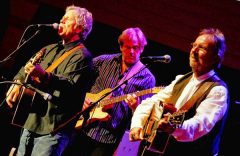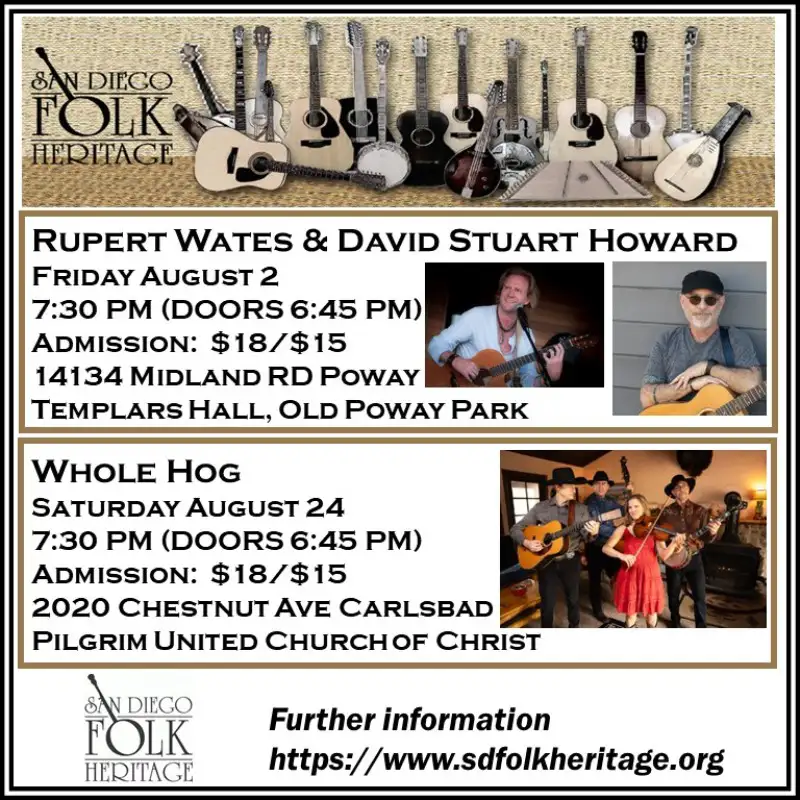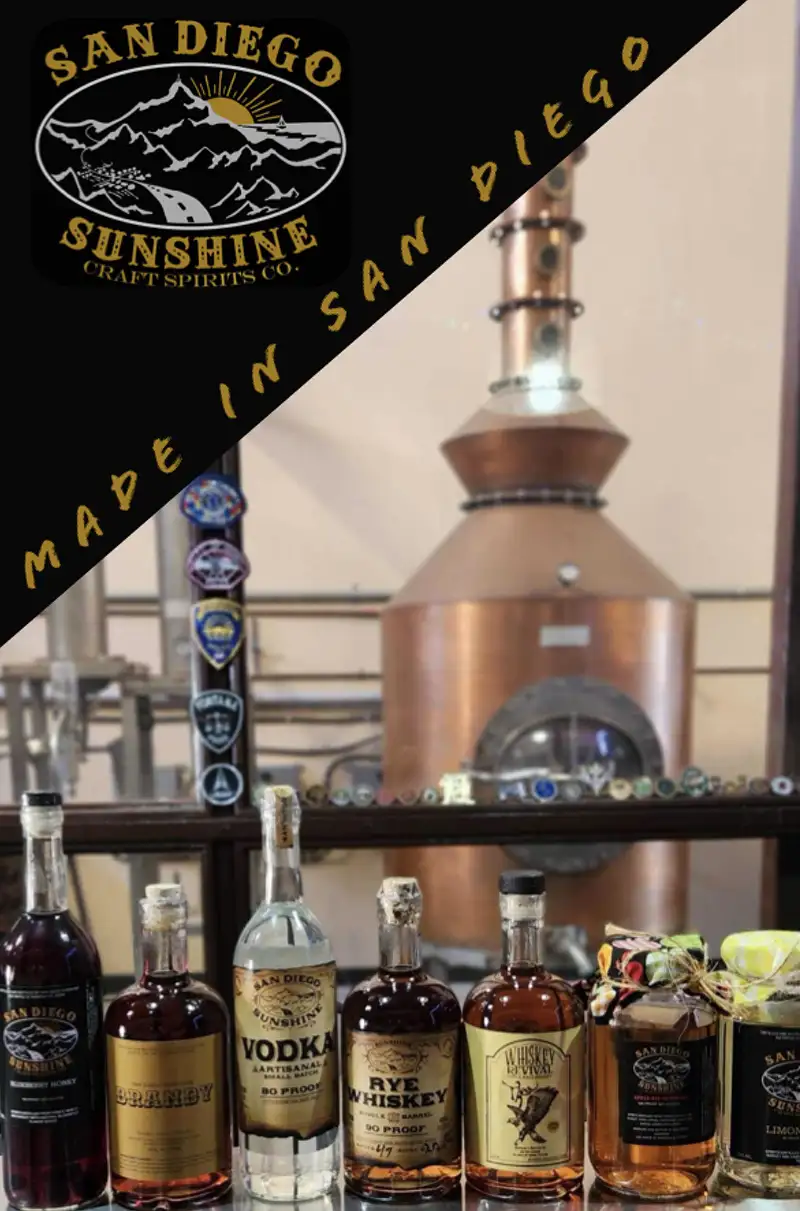Tales From The Road
For the Love of the Music: The Desert Rose Band

John Jorgenson, Chris Hillman, and Herb Pedersen of the Desert Rose Band
Here’s a music trivia question. What was the name of the band Chris Hillman was in that had 12 songs chart in the top 40 nationally? Hint: they were innovative with a folk/country/bluegrass feel. Another hint: they created amazing harmonies, imaginative soaring guitar leads, and laid the groundwork for future popular music, especially Americana. Give up? If you said the Byrds, you’d be wrong. If you were hip enough in 1987 to turn on mainstream country radio, you most likely would’ve heard a country-rock song by the Desert Rose Band, fronted by Chris Hillman. While the Byrds legacy justifiably continues to grow, Desert Rose outranks them in hits, making it to #1 twice and a total of 12 songs making into the top 40 on the national country charts. They were a virtual super group of country music, but only to those who took a second look at the players. Along with Hillman, whose Byrds, Flying Burrito Brothers, and Manassas days are well known, there was Herb Pedersen (the Dillards), lead guitarist John Jorgenson (later to join Elton John’s band), drummer Steve Duncan (Rick Nelson and the Stone Canyon Band), Bill Bryson (the Dillards), and Jay Dee Maness (Buck Owens). But, today, like many from the era between 1985 until 1991,they are forgotten. It seems mainstream country music today has amnesia. There is a rich history; pockets of inspired country music in the past. The Desert Rose Band were at the sharpest point in one of these places in music history.
In 1987 something strange happened to mainstream country radio. The music was good. It was really country music. Oddly enough, while there have been periods in country music history of exceptional artistry and craft, they have usually been short-lived, followed by a host of forgettable imitations and watered-down, contrived music. But, like most other genres, country music has a way of purifying itself. It began in the ’20s with Jimmie Rodgers and the Carter Family, then to the ’40s and Roy Acuff; the ’50s saw Ernest Tubb and Hank Williams, while the ’60s gave us Johnny Cash and Merle Haggard, then the ’70s Outlaw Movement brought us Willie Nelson and Waylon Jennings, which leads to the ’80s. As the decade began country music had received a commercial boost with the release of the John Travolta movie, Urban Cowboy. In 1983 the charts were becoming populated with the likes of Emmylou Harris’ former mando player, Ricky Skaggs. He would go on to receive the Academy of Country Music’s cherished Entertainer of the Year award in 1985. His childhood friend, Keith Whitley, would soon follow in 1984 on his way to the top of the mainstream country charts a few years later. Emmylou Harris was already there with a string of hits that would continue through the decade. Roseanne Cash would score a #1 cross-over hit with “Seven Year Ache.” The Sweethearts of the Rodeo (Janis and Kristine Oliver) who made the transition from Southern California to Nashville, were also peaking artistically and commercially. It was a heady time. It was a time when it was not unusual to turn on mainstream country radio and hear up-and-coming artists like Lyle Lovett, k.d. Lang, Steve Earle, and Dwight Yoakam.
Meanwhile, back in Southern California, Chris Hillman was having his own personal revelation. After signing with Sugar Hill records in 1983, he released two solo albums that reclaimed his country roots. After years in a kind of rock wilderness, ably supporting Stephen Stills’ Manassas and the ill-advised Souther, Hillman, Furay Band, he followed his heart and began recording the music he loved most. This direction was no stranger to him, considering he began playing bluegrass on mandolin as a teenager. His first Sugar Hill solo effort, 1983’s Morning Sky, was a fine return to his roots with creative bluegrass and folk interpretations of songs by John Prine, Kris Kristofferson, Shel Silverstein, Dan Fogelberg, Jerry Garcia, and Robert Hunter. However, it was his next album, 1984’s Desert Rose, that, like its title, would foreshadow his future success. This album goes straight for the heart of real country music. He included originals and songs by Mickey Newbury, Jimmie Rodgers, the Louvin Brothers, and George Jones. It’s an energetic, inspired call to return country music to its original form. It takes the same approach used on the Byrds’ Sweethearts of the Rodeo and cranks up the honky tonk jukebox with some of the most accessible country music on record. In support were Herb Pedersen, James Burton, Ron Tutt, Bernie Leadon, and Jay Dee Maness.
As fate would have it, Hillman’s 1985 involvement with Dan Fogelberg’s bluegrass-tinted High Country Snows recording and tour reunited him with Herb Pedersen. He also met a young, talented guitarist, John Jorgensen. After playing on the side during the tour with Fogelberg, the trio began playing live acoustic gigs. It was Jorgenson’s idea to plug in and electrify the sound they were creating. With that addition, the Desert Rose Band was born. With Bill Bryson on bass, Steve Duncan on drums, and Jay Dee Mannas on pedal steel; Hillman found himself in a band that gave full voice to his love for country music. For the former Byrd, he had fully stepped out of the shadows of the other artists he had supported over the years. Like Hillman himself, the music was bright, consistent, and intensely loyal to country music. His Sugar Hill solo albums and the Desert Rose Band self-titled debut showed Hillman to have his own creative voice that in many ways would surpass the country leanings of many of those he had play with during his storied past. But, what made Desert Rose work was Hillman’s generosity in allowing room for the skilled musicians in the band. With Herb Pedersen singing high harmonies, Jorgensen playing lead guitar with inspired energy, and Jay Dee Manass’ pedal steel weaving along with Bill Bryson and Steve Duncan’s steady rhythm, this was a real band with all egos set aside for the good of the music.
The Desert Rose Band were something to behold on stage. At one of their earliest 1996 shows they played at McCabe’s Guitar Store in Santa Monica. The venue has perfect acoustics and only seats 150 people. The entire band was set up on the small stage. What proceeded very nearly blew the walls from the guitar store. But, it was clear, Hillman was in his element. His country revelation from his early youth had come full circle. In 1987 the gigs got bigger. One now legendary night at the Roxy on Hollywood’s Sunset Strip, the band played to an audience that included Stephen Stills, Bruce Hornsby, Bernie Leadon, Rose Maddox, and Elton John, who was a huge fan of Hillman’s. After a few years the rock star managed to draft Jorgenson into his band.
So from 1987 until 1993, the Desert Rose Band reigned over the country charts with a series of 12 consecutive hits. They joined the New Traditionalist Movement. Country radio listeners were able to hear a California band soar majestically through the Nashville airwaves. According to Chris Hillman in a 2007 interview with this writer in the San Diego Troubadour, the Desert Rose Band was his favorite band. He said they operated without the ego problems he had experienced in the past. He said that he felt they would have been honored with more Country Music Awards if they had moved to Nashville. However, even though Hillman and the band remained in California, they were given Band of the Year/Touring three years in a row by the Academy of Country Music. Jay Dee Maness, Bill Bryson, John Jorgensen, and Steve Duncan were all given several Instrumentalist of the Year awards. But, even though they released five fine country albums with all of those hits, they were never nominated for the major categories.
By 1991, the New Traditionalist movement had run its commercial course. Almost too deliberately, sales dropped for all of the major artists of the era. Most of them would go on to win Grammys. They would develop fan bases that allowed them remain on their labels or sign to independent labels, allowing them creative freedom. Others released their music on their own labels. Today, Lyle Lovett, k.d. Lang, Steve Earle, Roseanne Cash among many others have found their niche in the newly formed Americana music genre.
The years since the success of the Desert Rose Band have been good to Chris Hillman. He has continued with the same country and bluegrass based direction, releasing albums with Herb Pedersen including the classic, Bakersfield Bound. Hillman and Pedersen remain in demand on the Americana festival circuit.
In 2010, the original members of DRB reunited for a tour. With its success, they have continued to play occasional shows. Currently, they are alternating between the full band and an acoustic trio version with Hillman, Jorgenson, and Pedersen. Today’s country radio has become a dismal fusion of rock, rap, corporate driven formula hits, and trite commercial pablum. But, it’s good to be able to look to the past and remember there once was a day when some of the best of our generation were heard on country stations. Meanwhile, we wait for another insurgent movement of real country music inspired, as Brad Paisley has said, by the likes of the Desert Rose Band.
See them live on Friday, November 2 at 7:30pm. Del Mar Powerhouse, 1050 Camino Del Mar.






